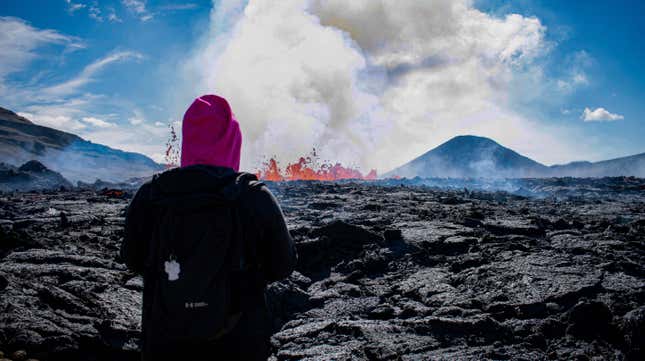
A volcano in Iceland has been spewing lava for the past few days, and as spectators angled their phones for the perfect shot, three tourists have been injured in an attempt to visit.
Fagradalsfjall is a volcano in Iceland that is currently erupting approximately 18.6 miles (30 kilometers) southwest of the country’s capital, Reykjavik. Eruptions in Iceland are not uncommon, given the country’s geology, and as Fagradalsfjall began erupting on Wednesday, it quickly became a destination. But, according to Iceland’s Department of Civil Protection and Emergency Management, three tourists were injured in their quests to visit the volcano on Wednesday night. One tourist suffered a broken ankle along the 5 mile (8 kilometer) hike to the volcano. The others’ injuries were not disclosed.
“We tell people that, even though we know it’s spectacular and there’s nothing like it, we have to be careful, and we have to be prepared before we go,” department spokeswoman Hjordis Gudmundsdottir said to the New York Times. “People have to be careful and in good clothes and good shoes. We are trying to tell that to both Icelanders and our foreign friends.”
Travelers at Iceland’s Keflavik airport were concerned when greeted with the news that Fagradalsfjall was erupting, as the airport is only 12.5 miles (20 kilometers) away. However the government of Iceland issued a press release indicating that flights in and out of Iceland would not be disrupted regarding the volcanic eruption.
Likewise, the threat to local communities and cities is low as the eruption is a fissure eruption, which typically occurs along Iceland’s long volcanic vents and sees lava emerge in more of a leak than an explosion. These eruptions are much less dramatic than cone eruptions and tend to produce little to no volcanic ash.